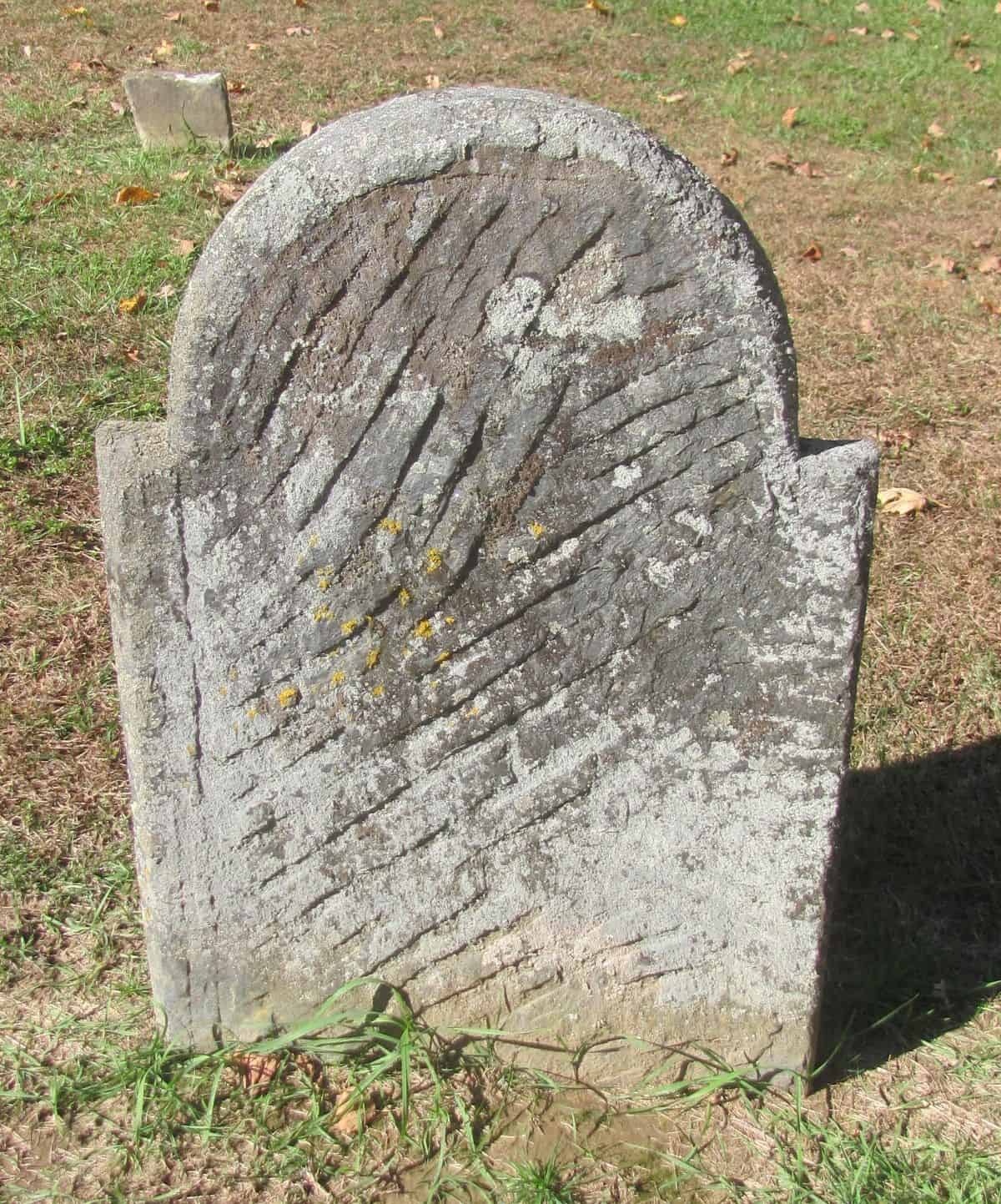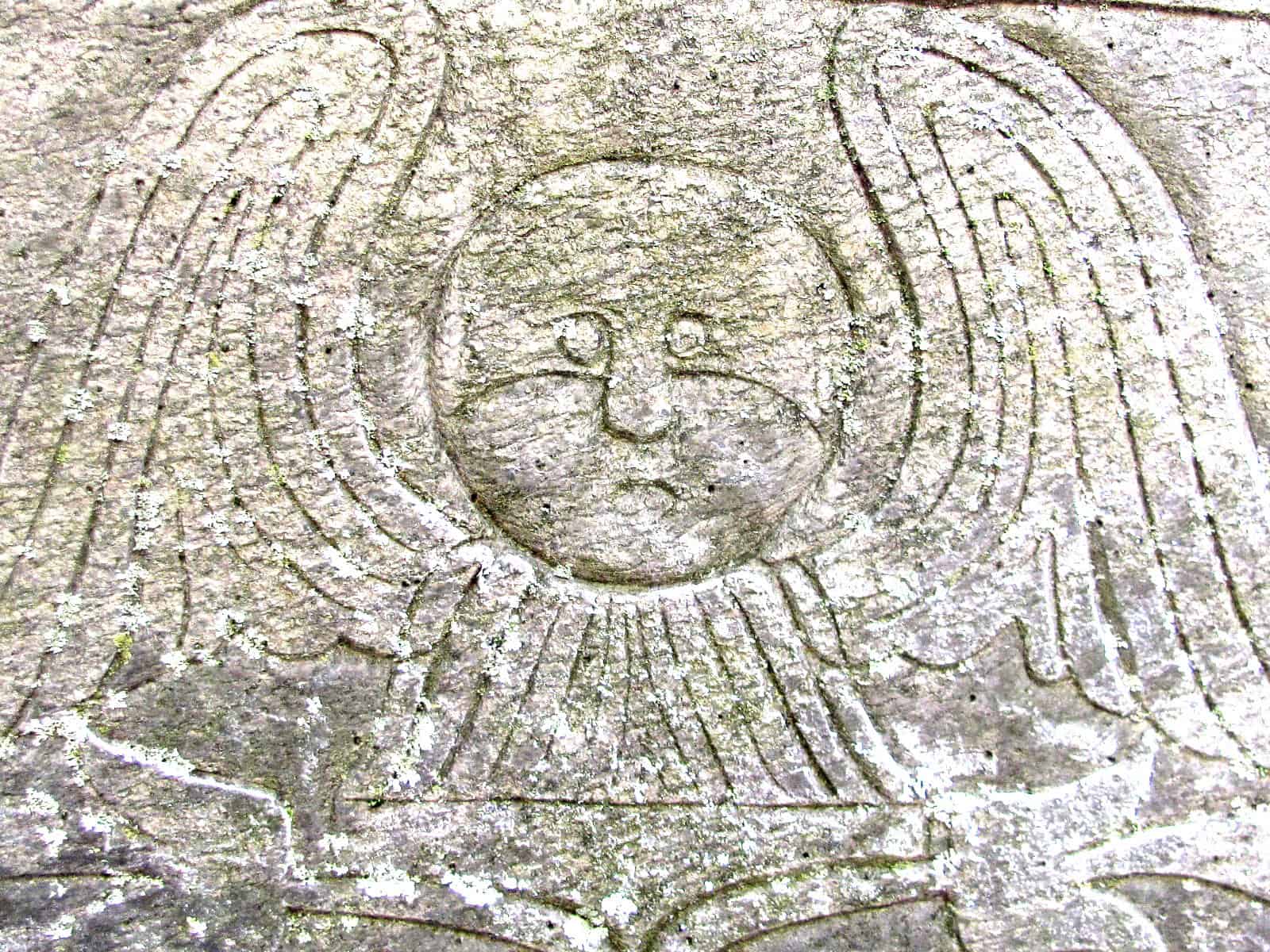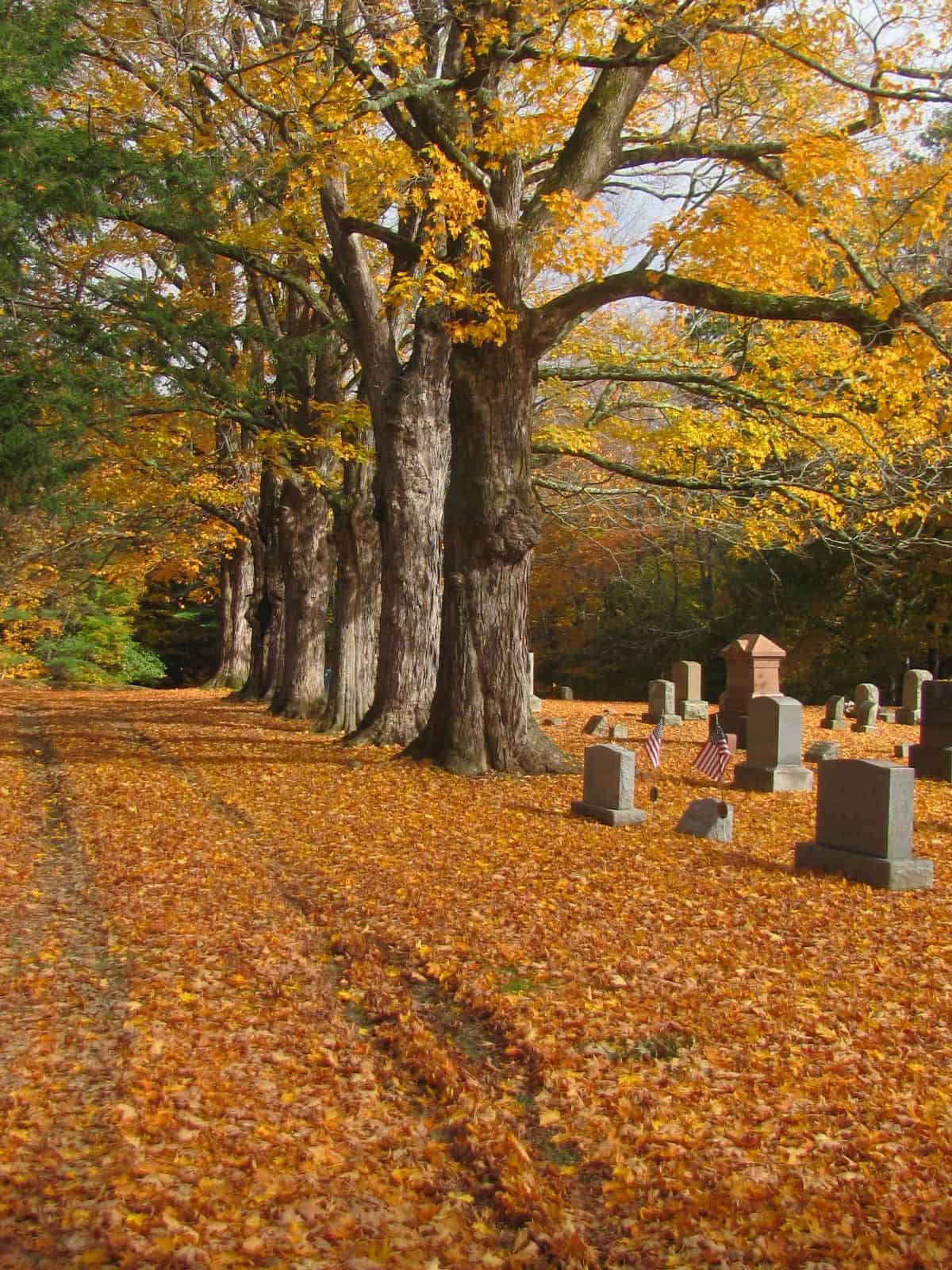
Danny Clemons and I went cemeterying this past Oct. 15 for the first time this year. We’ve visited many of the cemeteries in this region in past years. So where to go was the question.
We began the day in Perkinsville. Down Maple Street we went to the flood control area. It was a beautiful fall day with bright blue sky. We drove around here, with me repeating what Becky Tucker told on a tour, last summer. Several people were out walking their dogs. It’s a beautiful location. You live here so why not take advantage of it?
Next, at Downers Four Corners, we took Route 131 to Ascutney. We went under the interstate toward the village. On the left is Cemetery Road. We drove out to the Ascutneyville Cemetery.
The first thing we noticed as we got out of car, was the smell of the freshly fallen leaves. No other smell compares. It is so welcome.
We toured this cemetery finding numerous slate gravestones. They were difficult to read because of lichen growing on the surface of the stones. There was one tall marble spire that had a fungal growth close to an inch deep.
One slate stone was taller than Danny. The back of another early gravestone showed the tool marks from the maker. You can see where he used hammer and stone chisel to reduce the thickness and weight of the stone. There are long gouges, maybe a half-inch deep and close to an inch wide. I love seeing this old handwork. Most gravestones we see are smooth on the back.
Next, we went to the Ascutney Cemetery in Windsor. This is a sprawling cemetery. Here, in one area, we saw a number of wooden crosses. Each wooden cross had a name plate that included name and death dates. Danny thinks this is where

prisoners from the Windsor State Prison and paupers were buried.
Our next stop was the burying ground behind the Old South Church in Windsor. This is an early and interesting cemetery. Danny and I really enjoyed walking here. Gray squirrels were running about collecting nuts. And the ever-present smell. There are many slate graves here, and a few family plots. In one family plot we found an interesting gravestone. It is slate with weeping willows carved thereon.
The tombstone reads: “Phebe Johnson, colored girl, died in the hope of Christ Aug. 31, 1832 AE 22.” This raises questions as well as offering insight to this family. They must have loved this girl very much to include her in their family plot. I’m sure folks at the Windsor Historical Society could answer questions I have. I think there’s a story here.
On one early slate was a carving of a round face with wings. It’s beautiful yet haunting. This style carving was brought from England by early settlers and continued here until the 1770s.
Traditions and customs
Traditions are a way of life passed down from one generation to the next. Danny’s and my parent’s generation were born in the early 1900s. Their parents were born in the 1890s. Each generation passed their customs down to their children.
When I was growing up, my family often went for a Sunday drive after dinner (lunch). As Danny and I drove around, this subject came up. Danny’s parents did the same thing. But where does this come from?

In some ways, Danny and I are not that far removed from our grandparent’s generation and their ways. Going for a Sunday drive was something our grandparent’s did in horse and buggy. After church, it was common to go for a drive. This is the origin of this custom.
Danny drives purposely and very slow. We recalled those rides, with our parents, and how enjoyable they were, or where we went or saw. We pulled over several times to let those in a hurry pass us by. I like riding with Danny.
I dated a woman in 2001. She had moved up from Delaware and bought a home in the country. One day, I was driving her home in my Corvette on the dirt road. I wasn’t in a hurry and there was a car behind me. I said, “I’m pulling over to let this car pass.” “No,” she said. “Never mind them.” You shouldn’t have to argue about common courtesy. She didn’t understand our ways, nor did she try.
This week’s old saying is an epitaph I saw years ago: “I went as long as I could.”